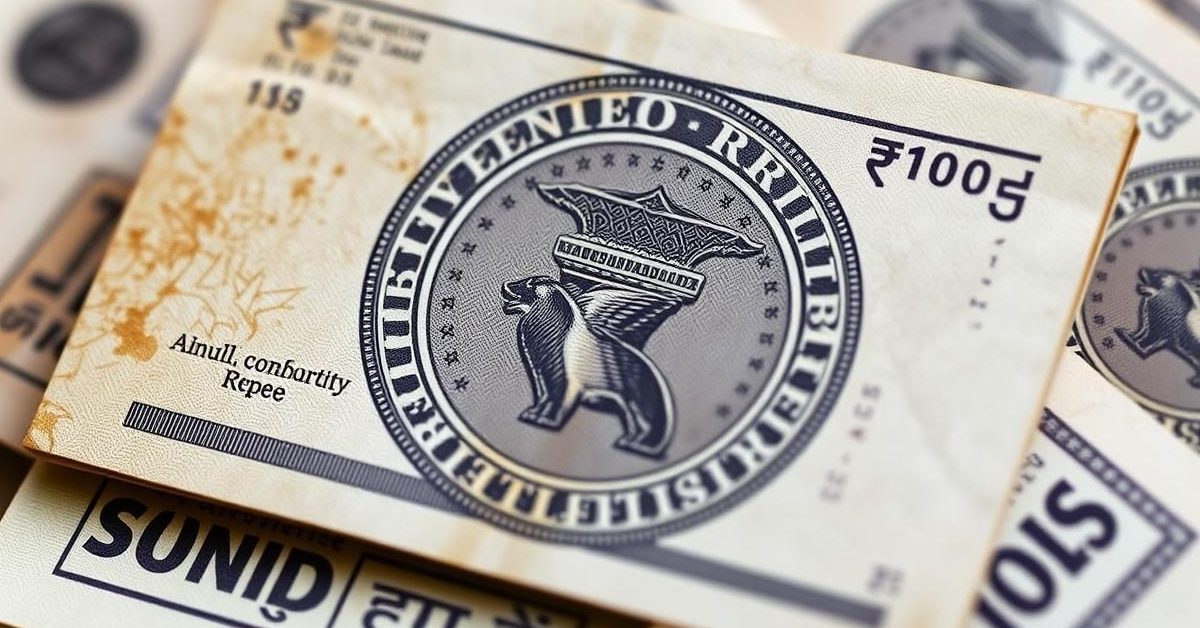Understanding the Indian Rupee’s Resilience: A Deep Dive into Its Dynamics
The Indian Rupee, like any major currency, is constantly influenced by a complex interplay of domestic and global forces. Its journey, at times volatile, is meticulously managed to safeguard India’s economic stability. A critical bulwark against a free fall in its value is the strategic intervention by the **Reserve Bank of India (RBI)**. This central banking institution acts as a vigilant guardian, employing its vast foreign exchange reserves to stabilize the currency during periods of significant depreciation, buying or selling dollars as needed.
However, the rupee’s health is not solely an internal affair. A country’s **balance of payments (BoP)** position is a crucial determinant. A strong BoP, reflecting robust inflows from exports and investments, fundamentally supports currency stability. Conversely, a weak or deteriorating BoP, often driven by a large trade deficit where imports vastly outweigh exports, can exert significant downward pressure on the rupee. India, for instance, has historically been a net importer of merchandise, which creates a structural trade imbalance, impacting its current account.
Furthermore, the rupee’s trajectory is deeply intertwined with **external factors**. The performance of major global currencies, particularly the **US Dollar**, plays an undeniable role. When the US Dollar strengthens against a basket of currencies, it often leads to a depreciation of the Indian Rupee. Global economic shifts, geopolitical events, and the sentiment of **Foreign Portfolio Investors (FPIs)** also contribute to the intricate dance of currency valuation, making it a truly global phenomenon.
The Promise of Green Hydrogen: A Breakthrough in Decentralized Energy
Imagine a future where your home or industrial facility is powered by clean energy derived from something as simple as water. This vision is rapidly becoming a reality with the advent of **hydrogen-based microgrid systems**. These innovative systems harness the power of **electrolysis**, a process that uses electricity to split water (H2O) into its constituent elements: hydrogen and oxygen. The generated hydrogen can then be stored and, when electricity is needed, fed into a **fuel cell** to produce power on demand, with water as the only byproduct.
This transformative potential has drawn significant attention from global industry leaders. In a notable collaboration, **Toyota Kirloskar Motor**, the Indian arm of the Japanese automotive giant **Toyota**, has partnered with **Ohmium International**, a prominent US-based company specializing in electrolyser manufacturing. Their joint venture aims to develop a scalable **green hydrogen**-powered microgrid system.
This partnership extends beyond traditional mobility applications. Toyota, known for its pioneering work in **fuel cell technology**, is exploring the broader energy ecosystem, while Ohmium brings its expertise in efficient hydrogen production. Together, they are investigating applications for these self-contained **water-to-hydrogen-to-electricity systems**, including their use as **domestic gensets** and for powering **hard-to-abate industrial sectors** that are challenging to decarbonize. This initiative marks a significant step towards decentralized, off-grid power generation, promising a more sustainable energy future for communities and industries alike.
Cultivating Innovation: India Becomes a Hub for Potato Research
The humble potato, a staple crop globally, holds immense significance in food security and economic livelihoods. Its origins trace back to the Peruvian-Bolivian Andes, a testament to its rich history and journey across continents. In a landmark decision, the **Union Cabinet** of India recently approved the establishment of a regional wing of the **International Potato Center (CIP)**, a renowned research-for-development organization headquartered in **Lima, Peru**.
This new facility, named the **CPI-South Asia Regional Centre (CSARC)**, will be strategically located in Singna, within the **Agra district** of **Uttar Pradesh**. Its mandate is far-reaching: it will not only serve the needs of farmers across India’s crucial potato belt states, including Uttar Pradesh, **Bihar**, and **West Bengal**, but also extend its research and development expertise to other **South Asian countries**.
The CIP, founded in 1971, is dedicated to advancing research on potatoes, **sweet potatoes**, and **Andean roots and tubers**. Its global reach spans South America, Africa, and Asia, having initiated operations in India as early as 1975 through a foundational agreement with the **Indian Council of Agricultural Research (ICAR)**. The establishment of the CSARC in Agra underscores India’s commitment to agricultural innovation and its pivotal role in global food security, leveraging advanced research to enhance the productivity and resilience of this vital crop.
The Alarming Rise of Wilful Defaulters: A Challenge to India’s Financial Integrity
The term “**wilful defaulter**” sends shivers down the spine of financial institutions, representing a serious breach of trust and a significant challenge to the banking system. By definition, a ‘wilful default’ occurs when a borrower, despite possessing the financial capacity to meet their repayment obligations to a lender, deliberately chooses not to do so. This can involve diverting funds from their intended purpose, siphoning off money, or even disposing of assets provided as security without the bank’s knowledge.
Recent data from the **Reserve Bank of India (RBI)** paints a concerning picture. A staggering 2,664 corporate entities have been classified as wilful defaulters as of March 2024, having collectively failed to repay an astonishing **₹1.96 lakh crore** in bank loans. This represents a worrying trend, as the number of such defaulters has demonstrably **increased** from 2,154 in March 2020, with the total amount due also rising sharply from ₹1,52,860 crore over the same four-year period.
These cases often find their way to the **National Company Law Tribunal (NCLT)**, highlighting the severe repercussions of such financial misconduct. The persistent rise in wilful defaults poses a considerable hurdle to the financial health of public sector banks and underscores the critical need for stricter enforcement and deterrence mechanisms to protect the integrity of India’s lending ecosystem.
Navigating the Gray Area: The Emergence of Opinion Trading in India
A fascinating, yet complex, phenomenon has been steadily gaining traction in India’s digital landscape: **opinion trading**. These platforms enable users to wager on the outcomes of future events, spanning a diverse range of topics from sports and **elections** to **cryptocurrency** movements. The business has witnessed a remarkable surge, attracting substantial funding and an estimated 5 crore users, largely operating beneath the regulatory radar.
Leading players in this nascent sector include Gurugram-based **Probo** and **MPL Opinio**. While Probo delves into a wide array of predictions, MPL Opinio primarily focuses on **cricket matches**. The core debate surrounding these platforms revolves around their classification: are they merely sophisticated betting platforms, or do they truly require a significant amount of skill, as argued by their investors and creators?
Currently, **India lacks a specific legal framework to directly regulate opinion trading platforms**. This stands in stark contrast to more mature markets like the **United States** and **Australia**, where governments have opted to treat such wagers as **securities**, thereby entrusting their regulation to **stock market regulators**. In India, the prevailing legal lens applied to online games differentiates between games of chance, where outcomes are purely random, and games of skill, which necessitate preparation and strategic thinking for a competitive advantage. The future of opinion trading in India hinges on how this critical distinction is ultimately defined and legislated.
The Elusive Poverty Line: India’s Ongoing Quest to Define Destitution
India has historically been a trailblazer in the field of poverty estimation, with its methodologies and data collection profoundly influencing global approaches to studying destitution. Yet, despite this legacy, India’s last officially recognized **poverty line** dates back to 2011-12. This benchmark was based on a 2009 formula proposed by a committee led by the esteemed **Delhi School of Economics** economist, **Suresh Tendulkar**. Since then, a formal update to this crucial methodology has remained elusive.
In 2014, another significant attempt was made by a committee chaired by former **Reserve Bank of India (RBI) Governor C. Rangarajan** to recommend a new method for poverty estimation. However, these recommendations were never officially adopted. Consequently, India has increasingly relied on alternative metrics, such as the **Niti Aayog Multidimensional Poverty Index (MPI)**, which fundamentally differs in its measurement approach, or the internationally recognized **World Bank’s poverty line**.
To put India’s past domestic poverty lines into perspective:
* Before the Tendulkar recommendations in 2009, India’s own formulated poverty line was set at **₹17 per person per day for urban areas** and **₹12 for rural areas**.
* The **Tendulkar Committee** in 2009 raised these figures to **₹29 per person per day in urban areas** and **₹22 in rural areas**. These were further adjusted to **₹36 and ₹30**, respectively, by 2011-12.
* The **Rangarajan Committee** in 2014 suggested a significantly higher poverty line of **₹47 per person per day in urban areas** and **₹33 in rural areas**.
The ongoing absence of an updated, officially accepted domestic poverty line underscores the complexity and political sensitivity surrounding the definition and measurement of poverty in India, a debate that continues to shape socio-economic policies.
Decoding Your Income: The Importance of Form 16 for Salaried Employees
As the financial year draws to a close and the tax filing season commences, millions of salaried employees in India eagerly await a crucial document: **Form 16**. This certificate is an indispensable tool for accurately submitting **Income Tax Returns (ITR)** and ensuring compliance with the nation’s tax requirements. It acts as a clear, concise summary of the **Tax Deducted at Source (TDS)** by an employer from an employee’s salary over the financial year.
Essentially, **Form 16** is the employer’s official declaration of the tax they have withheld from your earnings and deposited with the government on your behalf. It provides a detailed breakdown of your compensation components, including basic salary, allowances, and perquisites. Crucially, it also lists any **tax-exempt allowances** and permissible **deductions** claimed by the employee, such as investments under Section 80C or contributions to health insurance.
Recent changes, particularly those introduced in the **Union Budget 2025**, aim to further enhance the transparency and clarity of **Form 16**. These updates are designed to offer a more granular explanation of various salary perks and their taxability, empowering salaried individuals with a clearer understanding of their financial obligations and entitlements. Understanding your Form 16 is paramount for a seamless and accurate tax filing experience.
Shaping the Future of Digital Money: The Impact of the GENIUS Act
The world of digital assets is rapidly evolving, and legislative bodies are working to keep pace with its innovations. A significant development recently emerged from the **United States**, signaling a clear direction for the regulation of cryptocurrencies, particularly **stablecoins**. The **US Senate** overwhelmingly passed the **GENIUS Act Bill** with a decisive vote of 68-30.
This landmark legislative move represents a substantial boost for **stablecoins**, which are cryptocurrencies designed to maintain a stable value by being pegged to a reserve asset, such as the US Dollar. The passage of the **GENIUS Act** underscores the increasing recognition of stablecoins within mainstream finance and the growing impetus from the **Donald Trump administration** in America to establish clear regulatory frameworks for these digital assets.
It is crucial to note that this bill signifies a major shift in the **United States’** approach to digital assets, not the **European Union’s**, as some might mistakenly assume. The GENIUS Act focuses on creating a robust regulatory environment for stablecoins, aiming to foster innovation while mitigating potential risks in the rapidly expanding crypto landscape. Its passage could have far-reaching implications, influencing global discussions and approaches to digital currency regulation.















